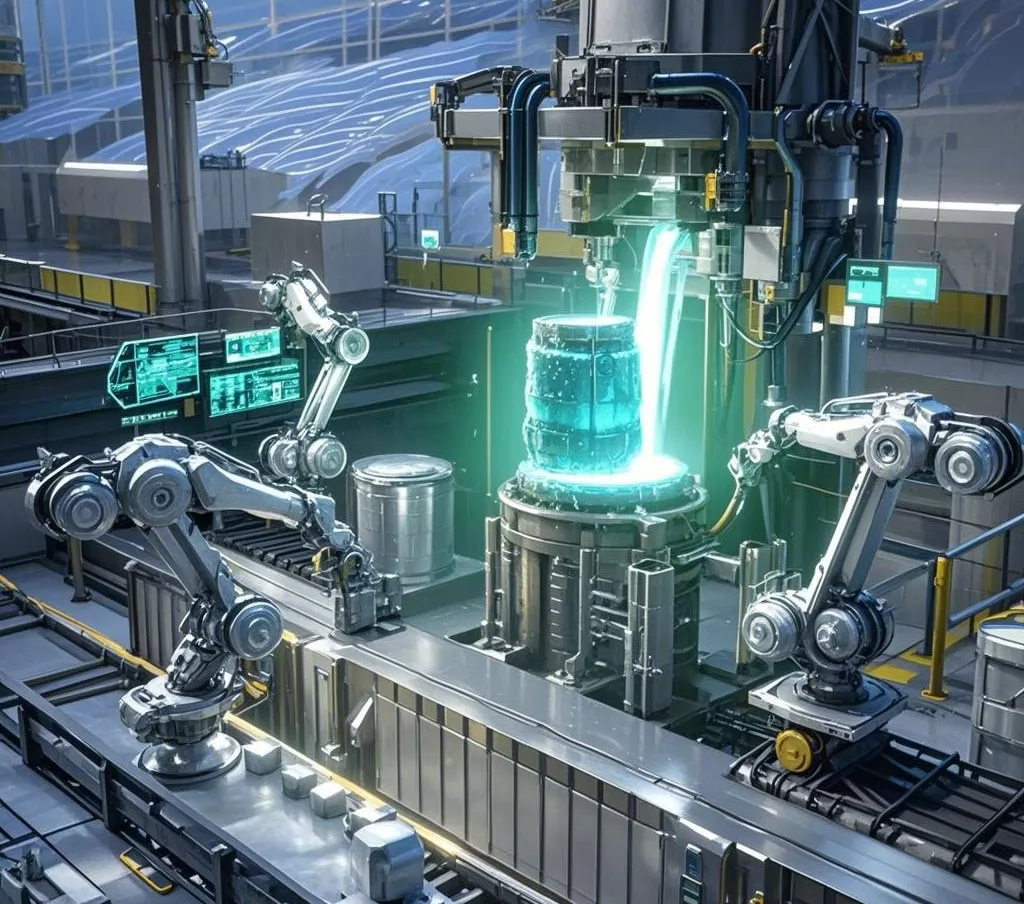Aluminum casting industry, is a superior long heritage and modern innovation in-depth combination of industry. Since the beginning of the 20th century to the traditional casting process, gradually expanding to machinery, aviation and other fields. the late 20th century with the die-casting technology innovation (such as cold chamber die-casting machine, vacuum die-casting) to achieve large-scale production, aluminum alloy has become the automotive, aerospace, Communications and other manufacturing core materials.
The aluminum casting industry is undergoing significant technological advances that will improve efficiency, sustainability, and product quality. Below is AI's analysis and forecast of some of the key trends and future applications of new technologies in the aluminum casting industry, which will revolve around efficiency improvements, precision manufacturing, and green and low carbon:
1. Digitalization and Industry 4.0
Artificial Intelligence and Machine Learning: predictive analytics can optimize casting parameters, reduce defects and improve efficiency.
Industrial IoT and smart sensors: IoT-based real-time monitoring systems enable dynamic adjustment of die casting parameters, which, combined with AI defect detection technology, reduces the product defect rate from 3% to below 0.5%.
Full process simulation technology: CAE simulation will cover key aspects such as melt flow, solidification shrinkage and stress distribution, shortening the process development cycle by 40% and increasing the material utilization rate by 15%.
Automation and robotics technology: automatic pouring, robotic finishing and inspection, greatly enhancing efficiency and improving surface finish, defect detection and quality control.
2. 3D printing
Rapid prototyping: additive manufacturing will reconfigure the mold industry chain, and the complex sand mold production cycle will be compressed from 30 days to 72 hours, which will support the demand for small-lot customized production.
Hybrid casting: Combining 3D printed sand molds with traditional casting can improve production flexibility.
Lattice structure: Topology optimization can be used to design lightweight, high-strength aluminum parts.
3. Advanced materials and alloy development
High-performance alloy development: new Al-Si-Mg system alloys, new aluminum alloys with improved heat resistance and mechanical properties will expand their applications in the aerospace and automotive industries.
Composite Casting: Aluminum-based silicon carbide (Al-SiC) castings will achieve mass production applications in high-temperature components such as motor end caps, with a 40% increase in thermal conductivity and a manufacturing cost reduction to 60% of the forging process.
4. Sustainable and green casting technology
Use of recycled aluminum: Intelligent sorting and melting equipment will make the utilization rate of scrap aluminum reach 95%, the proportion of recycled aluminum castings will be increased from 25% to 40%, and the energy consumption of tons of products will be reduced by 1,200kWh.
Low-carbon melting technology: Electromagnetic levitation melting technology will reduce melt oxidation loss by 50%, and with green power supply, the carbon emission intensity will be reduced to 1.2tCO₂/ton of aluminum.
Low-energy casting technology: Innovative technologies such as vacuum-assisted casting or electromagnetic casting can reduce energy use.
5. Large-scale integrated die-casting technology innovation
Integration of vehicle structure parts molding: multi-directional body casting technology will become the mainstream, through the 6000 tons above die casting equipment to achieve the chassis, body and other large parts of the overall casting, reduce the number of parts more than 60%, significantly reduce manufacturing costs and assembly complexity, at the same time Will also continue to be applied in other industries that require integrated molding needs.
Mold technology innovation: hydraulic drive composite mold system will replace the traditional single-mold structure, to achieve synchronous filling of multiple sprues and complex cavity molding, breaking through the traditional die-casting size limitations, such as the frame class and other large castings, such as the yield rate increased to more than 95%.
Aluminum casting industry technology iteration will focus on “low-carbon, high-performance, intelligent” to start, green casting and regeneration technology, integrated molding process, digital production system to become the core driving force, to promote the industry to high-efficiency, precision, sustainable direction of transformation.







.png)


.png) +86-574-83036520
+86-574-83036520 +86-574-83008051
+86-574-83008051 sales@innovaw.com
sales@innovaw.com

.png)

.png)
.png)
.png)

.png)
.png)
.png)









.png)

